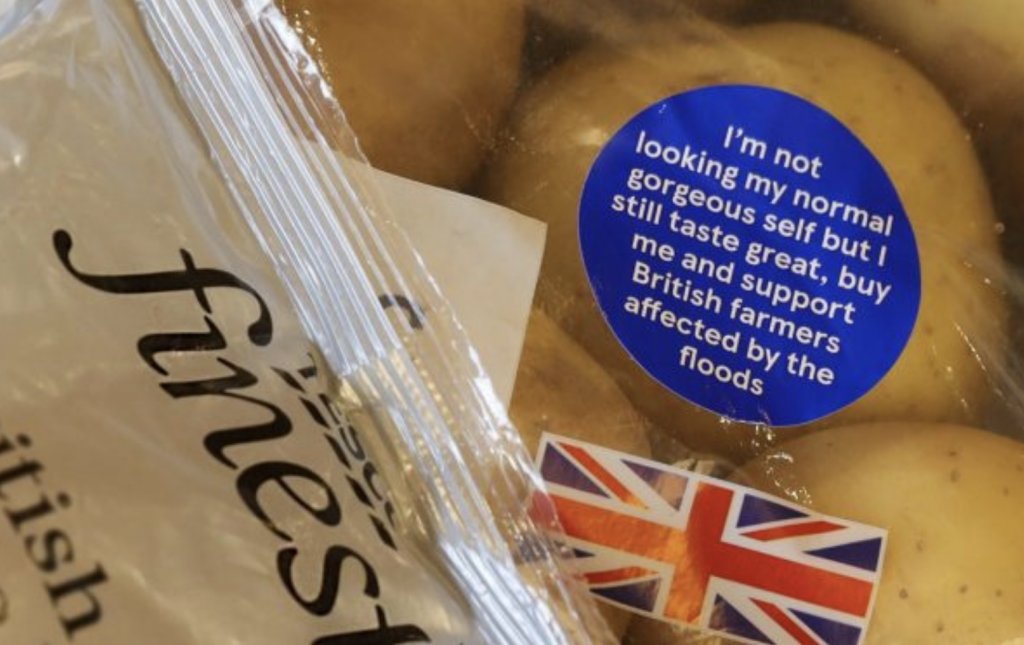Flood-hit farmers get help selling ‘ugly spuds’
3rd January 2020
Potato farmers hit by recent severe flooding have been given a helping hand by Tesco and supplier Branston. Packs of potatoes from affected regions are being sold with a special

Potato farmers hit by recent severe flooding have been given a helping hand by Tesco and supplier Branston.
Packs of potatoes from affected regions are being sold with a special blue sticker that reads: “I’m not looking my gorgeous normal self but I still taste great. Buy me and support British farmers affected by the floods.”
Growers have been badly hit by crop damage following the worst flooding since 2012, meaning many have struggled to harvest crops at the key trading time in the year. Crop yield is down and appearance has been affected.
It is the second year in a row that potato growers have been hit by poor growing conditions, with the Beast from the East and drought last year. Tesco says it has made moves to widen the specifications set by retailers governing the overall look and quality of fruits and vegetables.
Tesco potato buyer Ben Rowbotham said: “In order to support our British growers in Eastern regions, we have worked collaboratively with Branston to ensure farmers are supported and customers are not facing a shortfall at this key time.
“In Norfolk and Lincolnshire in particular, harvesting conditions have been extremely challenging and growers have worked hard to get as much crop out of the ground as possible.
“This means that some of our premium quality Finest range potatoes won’t look as bright as they normally do. However, they will still taste great and we want to make sure that customers realise quality is more than just skin deep.”
Growers in Lincolnshire, Norfolk and parts of Yorkshire have been particularly affected by the autumn floods.
Branston commercial director Richard Clark commented: “Usually great for potato-growing, these are the regions where we source most of our premium varieties. This autumn’s waterlogged fields have prevented or delayed harvesting. In some cases up to half the crop has been lost and we are still trying to harvest the remaining 20 per cent of our tonnages.”


